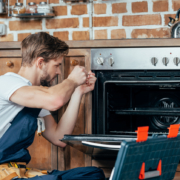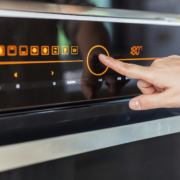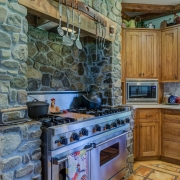Is Oven Maintenance Necessary After Holiday Cooking?
The kitchen becomes the epicenter of the house during the holidays, enabling families to gather around delicious dishes that really took a lot of cooking power to create. Everyone knows that it’s important for all of your appliances to be in good working order before and during the holidays, so people are pretty diligent about having any appliance repair in San Francisco done prior to this time of year.
What many do not think about, however, is how important it is to ensure that appliances are maintained after heavy use during the holidays, too. The oven is probably the appliance that gets revved up and used the most during the season, so read on to learn some very simple – yet important – tips that will help you keep it in good order after the holidays.
Clean Out the Food Bits
While you don’t have to call an expert in appliance repair in San Rafael, Mill Valley, or Larkspur automatically for professional maintenance after the holidays, you do need to do some preventative maintenance. Many people don’t keep the oven clean; however, food build-up inside can not only be a fire hazard, but also cause the appliance to unevenly heat food. This certainly has the potential to ruin your holiday meals and any meals afterwards! Be sure to clean all food residue out of the oven to keep it working properly.
Test the Temperature
In addition, test the oven’s temperature after it’s worked hard cooking holiday meals. You can simply use a thermometer suitable for high heat to make sure it’s cooking food at the proper temperatures. If your appliance seems to be cooking things too quickly or too slowly, checking the temperature accuracy of your oven is your first step.
Check the Door
Doors are fairly common causes of oven issues after the holidays, so you’ll want to check around the outside of it after all that cooking is finished. Look for leaky seals and moisture; if you notice moisture around the outside of your appliance, it could mean that there is a defective or broken gasket that is preventing the door from closing properly. The problems that result include wasted energy and higher utility bills, lower temperatures inside the oven, and longer cook times. The same holds true for any cracks in the door in general, including any glass in the front.
While you’re at it, take a quick look at your microwave, refrigerator, and dishwasher to make sure the doors on those appliances are still in good shape and seal completely. Should you notice that your appliances need repairs that are out of your comfort zone, don’t hesitate to call on our team of experts.
We can help with any and all appliance repairs, and we serve customers in San Francisco, San Rafael, Mill Valley, Larkspur, Novato, and all of Marin County. Contact us and let us know how we can help you!




